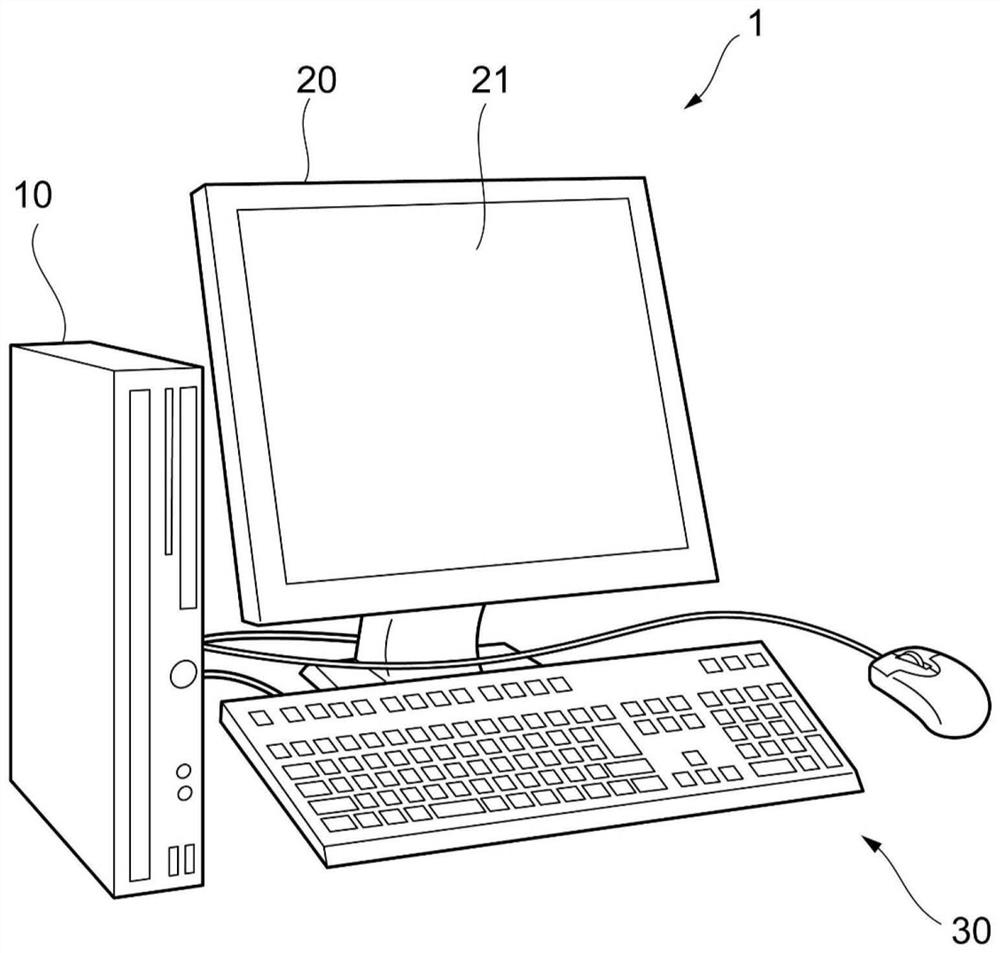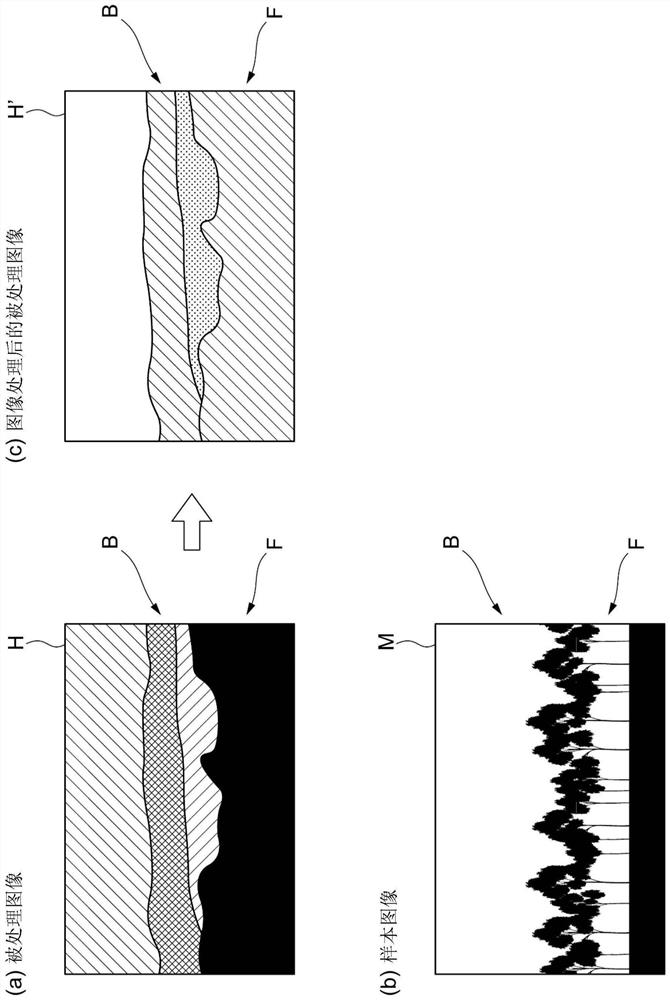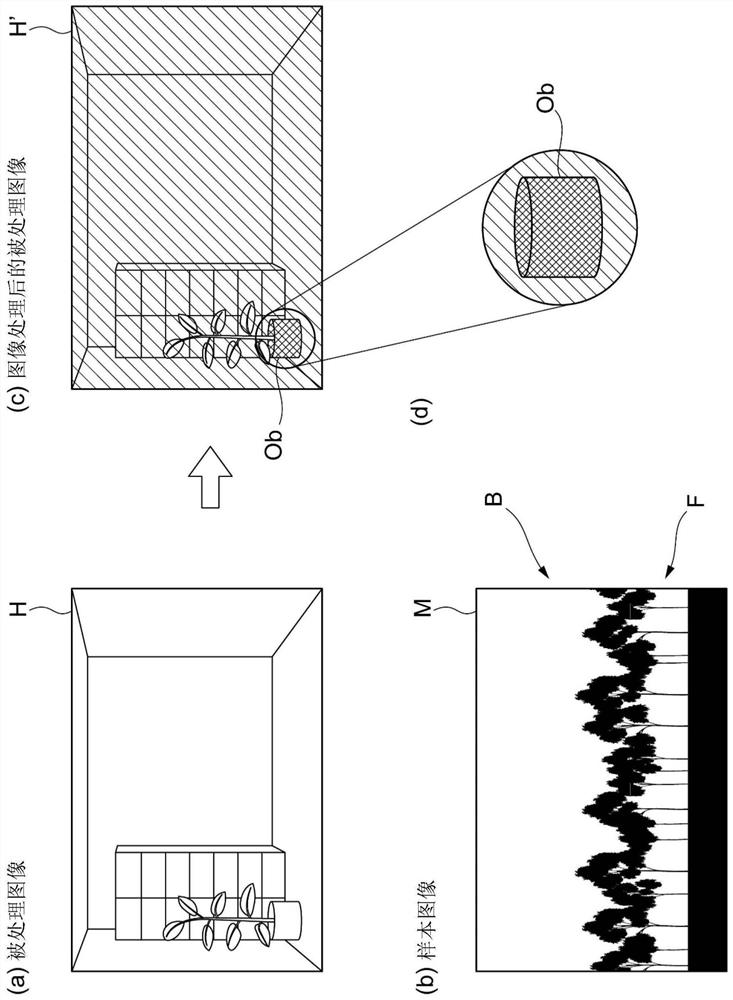Image processing device, method and system, and computer readable medium
An image processing device and image processing technology, applied in image data processing, computing, image communication and other directions, can solve problems such as unnatural images, and achieve the effect of easy calculation
- Summary
- Abstract
- Description
- Claims
- Application Information
AI Technical Summary
Problems solved by technology
Method used
Image
Examples
no. 1 Embodiment approach
[0079] First, the first embodiment will be described.
[0080] In the first embodiment, feature quantities are extracted for the processed image H and the sample image M, respectively. This feature amount is calculated using the luminance value of each image as the weight W. Furthermore, when the feature amount of the image to be processed H is matched with the feature amount of the sample image M, image processing can be performed in which the image of the image processed image H' becomes the image of the sample image M.
[0081] Figure 4 It is a block diagram showing an example of the functional configuration of the image processing device 10 in the first embodiment.
[0082] As shown in the figure, the image processing device 10 has: a color conversion unit 11, which acquires image information (input image data) of an image to be processed H and a sample image M, performs color conversion, and sets a chroma component and a brightness component; An extraction section 12 th...
no. 2 Embodiment approach
[0136] Next, a second embodiment will be described.
[0137] In the first embodiment, the luminance components I of the image to be processed H and the sample image M are directly set as the weight W as shown in the above-mentioned formula (1). On the other hand, in the second embodiment, the weight W is calculated from the brightness component I without directly setting the brightness component I as the weight W.
[0138] Figure 6 (a) to (b) are diagrams showing the relationship between the luminance component I and the weight W.
[0139] Here, the horizontal axis represents the luminance component I, and the vertical axis represents the weight W. In addition, here, in the processed image H and the sample image M, the relationship between the luminance component I and the weight W is shown separately. That is, the processed image H is shown with It(i,j) on the horizontal axis and Wt(i,j) on the vertical axis. In addition, the sample image M is illustrated with Ir(i,j) on...
no. 3 Embodiment approach
[0150] Next, a third embodiment will be described.
[0151] In the third embodiment, the scene of the processed image H and the sample image M is analyzed, and the weight W is changed according to the scene.
[0152] Figure 7 It is a block diagram showing an example of the functional configuration of the image processing device 10 in the third embodiment.
[0153] Such as Figure 7 As shown in the figure, the image processing device 10 and Figure 4 Compared with the image processing device 10 shown in , the difference is that a scene analysis unit 14 is added. In addition, the functions of the other color conversion unit 11 , feature value extraction unit 12 , and component adjustment unit 13 are the same for both. Therefore, the following description will focus on the scene analysis unit 14 .
[0154] The scene analysis unit 14 analyzes the scene of the sample image M. Specifically, the scene analysis unit 14 determines whether or not the scene of the sample image M i...
PUM
 Login to View More
Login to View More Abstract
Description
Claims
Application Information
 Login to View More
Login to View More - R&D
- Intellectual Property
- Life Sciences
- Materials
- Tech Scout
- Unparalleled Data Quality
- Higher Quality Content
- 60% Fewer Hallucinations
Browse by: Latest US Patents, China's latest patents, Technical Efficacy Thesaurus, Application Domain, Technology Topic, Popular Technical Reports.
© 2025 PatSnap. All rights reserved.Legal|Privacy policy|Modern Slavery Act Transparency Statement|Sitemap|About US| Contact US: help@patsnap.com



